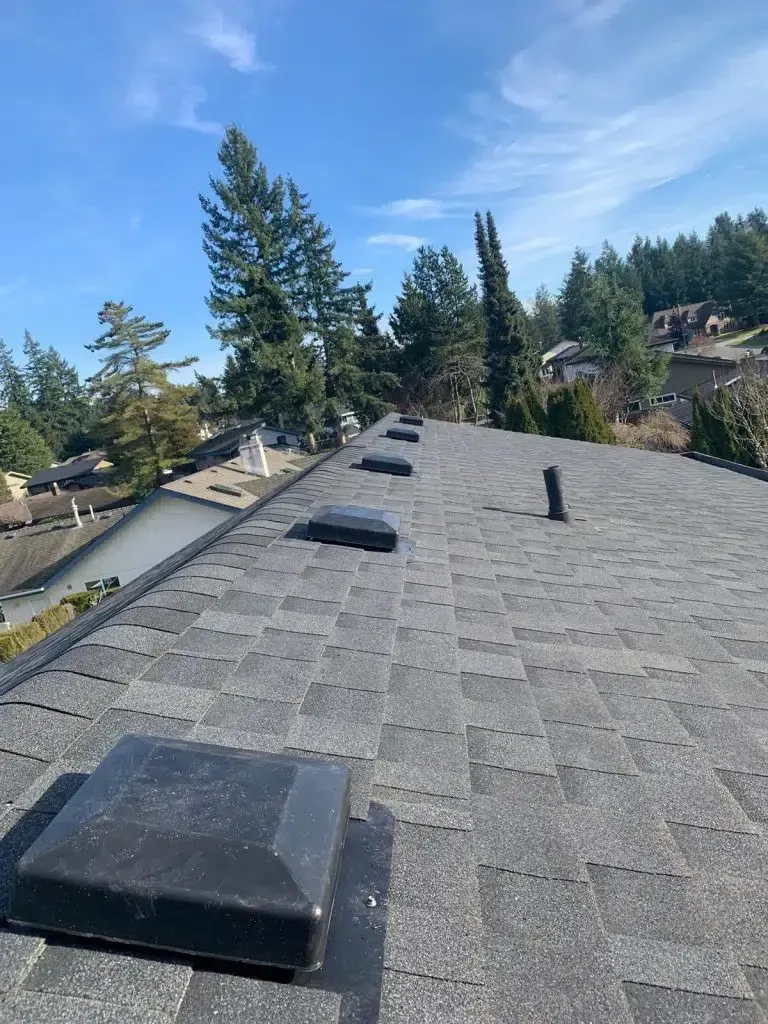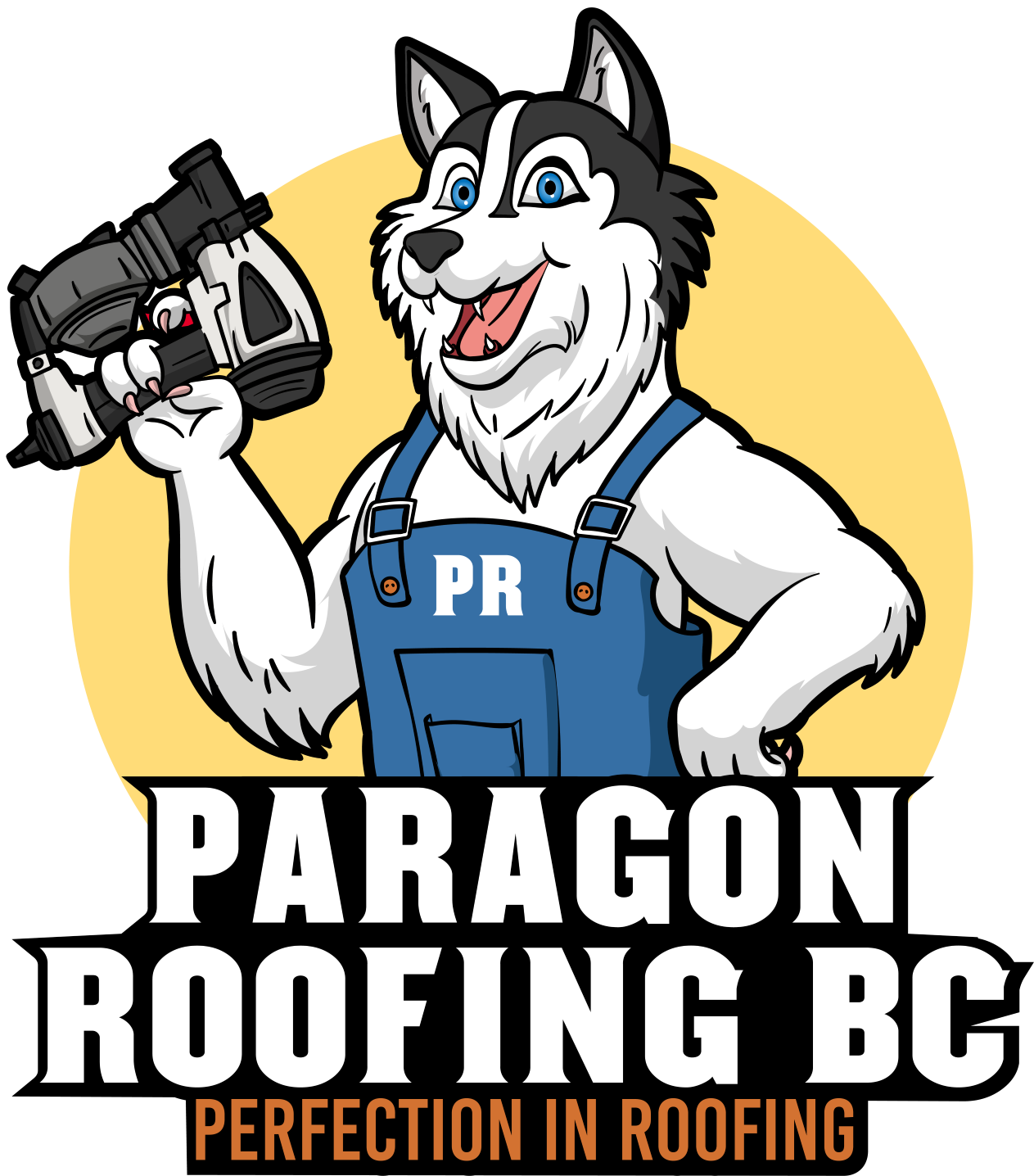How Often Should You Inspect Your Roof in Burnaby?
Short answer up-front:
twice a year—spring and fall—plus after any major storm. Long answer:
keep reading. Burnaby’s sky is generous with rain (nearly 1,920 mm annually) and not shy about wind-storms or wet, heavy snow. Those forces chew on shingles, pry up flashing, and invite slow leaks that stay hidden until they torch your drywall or short-out a bathroom fan. From the vantage point of a roofer who scrambles across Burnaby’s ridgelines every day, here’s the full, no-nonsense schedule—and the logic behind it—for roof inspections in our city.
1. Why Burnaby Roofs Need Their Own Rule Book
Burnaby isn’t Kelowna, isn’t Calgary, and definitely isn’t Phoenix. Our Pacific air mass delivers long strings of drizzle punctuated by “pineapple express” downpours; January alone can dump more than 240 mm of rain on a single neighborhood. Add freeze-thaw cycles on Burnaby Mountain and salty breeze drifting in from Burrard Inlet, and you have a recipe for:
- Granule loss
on asphalt shingles accelerated by persistent moisture.
- Metal oxidation
on earlier-generation flashing that lacks today’s protective coatings.
- Moss colonies
thriving in shaded north-facing valleys.
Bottom line: our city’s climate doubles the stress cycles compared with drier inland communities, so inspection frequency must be adjusted upward.
2. The Baseline: Two Comprehensive Inspections Per Year
Spring (late March to early May)
Shake off winter damage.
Freeze-expand cracks, wind-lifted tabs, ice-dam scars—spring is when they reveal themselves. BC Housing’s maintenance bulletin puts it plainly: inspect in the spring to “address any winter damage.”
Fall (late September to late October)
Prep for the long soak.
Clearing gutters before the first atmospheric river can add two years to a roof’s life. That same bulletin recommends a fall inspection to “prepare for upcoming winter snow and rain.”
Rule of thumb:
schedule within a week of the spring equinox and autumn equinox. The day lengths remind you; we handle the ladder.
3. Event-Triggered Inspections (The “Just-In-Case” Clause)
- Wind gusts > 60 km/h.
A single gust can snap ridge-caps. After November’s 2024 windstorm I found six missing vents on one Brentwood block.
- Hail or sleet bursts.
Pock-marks on metal panels won’t leak immediately but they void many warranties.
- Contractor foot traffic.
Solar installers and HVAC techs are great at their trade, less great at stepping only on load-bearing spots.
- Visible sag or staining indoors.
That ceiling stain means moisture has already migrated through sheathing—act the same day.
Eco Exteriors’ Vancouver guide echoes this strategy: inspect after severe weather “such as storms or heavy snowfall.”
4. Quick-Look Monthly Walk-Arounds (Homeowner Edition)
You don’t need ropes or a fall-arrest kit for this slice of due diligence—binoculars from the driveway will do. Once a month:
- Scan shingle lines for irregular shadows (often a lifted tab).
- Check gutter outlets for granule sludge.
- Note any fresh moss tufts, especially on the north side.
- Listen in the attic during heavy rain; dripping or hissing water is a flashing breach waving hello.
Total time: five minutes. Savings: thousands.
5. Age & Material Adjustments
| Roof Type |
Typical Lifespan in Burnaby Weather |
Inspection Multiplier |
| Three-tab asphalt (pre-2005) |
15 yrs |
2× (semi-annual is non-negotiable) |
| Architectural laminate |
22-28 yrs |
1× (annual after age 10, then semi-annual after 15) |
| Standing-seam metal |
40 yrs |
1× (annual) |
| Torch-on SBS on low-slope |
20-25 yrs |
2× plus post-storm checks |
| Cedar shake |
18-25 yrs (varies with treatment) |
2× plus mid-summer scan for cracking |
Metal sheds water better, but its hidden fasteners can back out with thermal cycling, so annual climbs remain wise.
6. Insurance & Permit Angles You Don’t Want to Ignore
Burnaby insurers increasingly ask for proof of proactive maintenance before honoring water-damage claims. One broker I worked with last winter shaved premiums 8 % for clients who could show two annual inspection reports. Meanwhile, the City of Burnaby treats repair work—yes, even “just replacing shingles”—as permit-worthy in many cases. Skipping inspections often means you discover rot only after it requires structural work, and structural work requires permits, inspections, and inevitable delays. Translation: spare yourself that admin spiral.
7. What a Professional Inspection Actually Covers
- Exterior surface
—shingles, shakes, membrane, panel seams.
- Flashings & penetrations
—chimneys, skylights, plumbing vents.
- Eaves & drainage
—gutter slope, downspout flow rate, debris load.
- Attic interior
—moisture readings on rafters, insulation depth, ventilation balance.
- Infrared scan (optional)
—thermal anomalies flag hidden leaks before your drywall does.
A written report from Paragon Roofing BC includes annotated photos, deficiency list ranked by urgency, and repair cost brackets. That document satisfies most insurers and becomes a time-stamped asset when selling your home.
8. The Cost–Benefit Numbers
- Average Burnaby roof replacement (2,000 sq ft asphalt): $17,500 – $22,000.
- Typical minor repair caught early (exposed nail heads, lifted ridge): $350 – $600.
- Our comprehensive inspection (with report): $289.
Do the math. One missed leak can saturate OSB sheathing in three months, leading to a $4,000 decking replacement. Two inspections per year for five years = $2,890. You’re still thousands ahead.
9. Season-Specific Checklists
Spring Focus
- Clear winter debris from valleys.
- Check sealant beads on exposed fasteners—cold brittles caulks.
- Confirm attic vents aren’t blocked by blown-in insulation.
Summer Focus
- Monitor UV degradation on south-facing slopes; Burnaby averages 205 hours of sunshine in July.
- Trim overhanging branches before autumn leaf-drop.
Fall Focus
- Flush gutters, verify downspout extensions slope away from foundation.
- Inspect chimney caps for secure mesh—prevent critter nesting.
Winter Focus
- After a snowfall > 10 cm, look for uneven melt patterns; warm spots can signal insulation voids.
- Ensure ice-dam membranes (if present) are performing—no icicles wider than a finger at eaves.
10. Frequently Asked Questions
“My roof is only five years old—do I really need a pro inspection?”
Yes. Manufacturer warranties often require documented inspections; missing this can void coverage.
“Can I just fly a drone?”
Drones are fantastic for aerial overviews, but they won’t spot a cracked plumbing boot hiding behind a vent stack. Use them as a supplement, not a replacement.
“What about condo strata roofs?”
Most Burnaby strata bylaws already mandate annual common-roof inspections. If yours doesn’t, lobby for it—the depreciation report will thank you.
11. Step-by-Step Annual Timeline (Burnaby Edition)
| Month |
Action |
| March
|
Book spring inspection; clean skylight channels. |
| April
|
Repair winter damage immediately—wet April tests fixes. |
| May
|
Apply moss treatment (if cedar or north-facing asphalt). |
| June
|
Quick binocular check after first summer thunderstorm. |
| July
|
Trim cedar branches; verify attic fan operation. |
| August
|
Order fall inspection slot—roofers book fast. |
| September
|
Conduct fall inspection; flush gutters. |
| October
|
Seal exposed fasteners; top up attic insulation. |
| November
|
Post-storm walk-around after first big wind event. |
| December
|
Clear ice dams with roof-safe rake if snow sticks. |
| January
|
Check attic for condensation streaks. |
| February
|
Re-inspect caulking if freeze-thaw spikes. |
Stick this on your fridge; set calendar reminders; your roof will outlive your next car.
12. What Happens When You Skip an Inspection (A Cautionary Tale)
Two summers ago, a Deer Lake homeowner called us about a “small ceiling bubble.” Inspection revealed a failed valley flashing that had been dripping for 18 months. We found:
- 32 ft² of black mold on the backside of drywall.
- Rotted 2 × 6 rafters needing sistering.
- Insulation soaked to R-value half-life.
Quote for full remediation: $14,300. An inspection in the previous fall would have flagged the compromised flashing—a $280
fix.
13. DIY vs Professional: Know Where the Line Is
Climbing a 6-in-12 roof with Burnaby’s slick marine moss is no joke. If you don’t have:
- CSA-approved fall-arrest gear,
- a friend to foot the ladder, and
- the judgment to say “nope” when gusts pick up,
call a professional. Your hospital deductible is steeper than our invoice.
14. Final Thoughts (From One Burnaby Roofer to Another Neighbor)
Roofs fail quietly, then all at once. In the Lower Mainland’s wet microclimate, those silent years are shorter than most homeowners assume. By locking in a spring-and-fall inspection rhythm and sprinkling quick DIY checks in between, you convert roofing from an emergency to a scheduled service—just like an oil change.
At Paragon Roofing BC, we’ve crawled attic hatches in Forest Glen, patched vents in Edmonds, and replaced skylight curbs in The Heights. The homes that stay dry longest aren’t necessarily the ones with the most expensive shingles; they’re the ones whose owners never let minor issues linger.
Ready to calendar your next inspection? Give us a ring, or book online for Burnaby roof inspections
—no high-pressure sales, just data, photos, and a plan.
Harman Singh
Lead Roofer, Paragon Roofing BC – Proudly Serving Burnaby, One Roof at a Time



